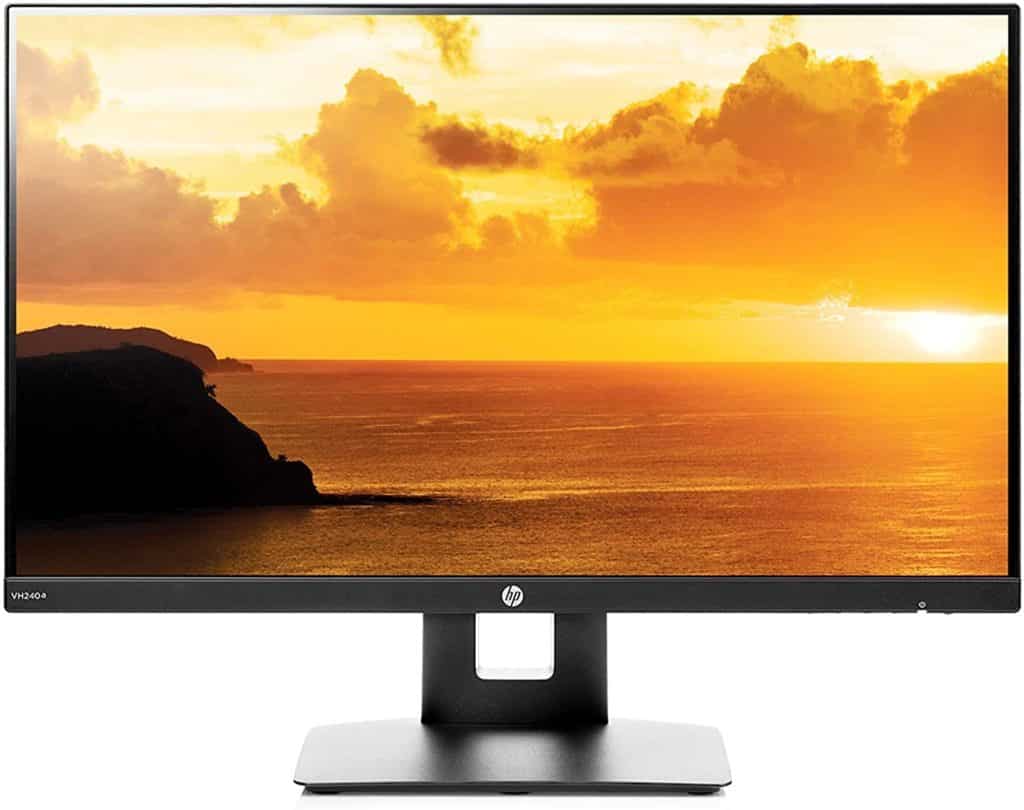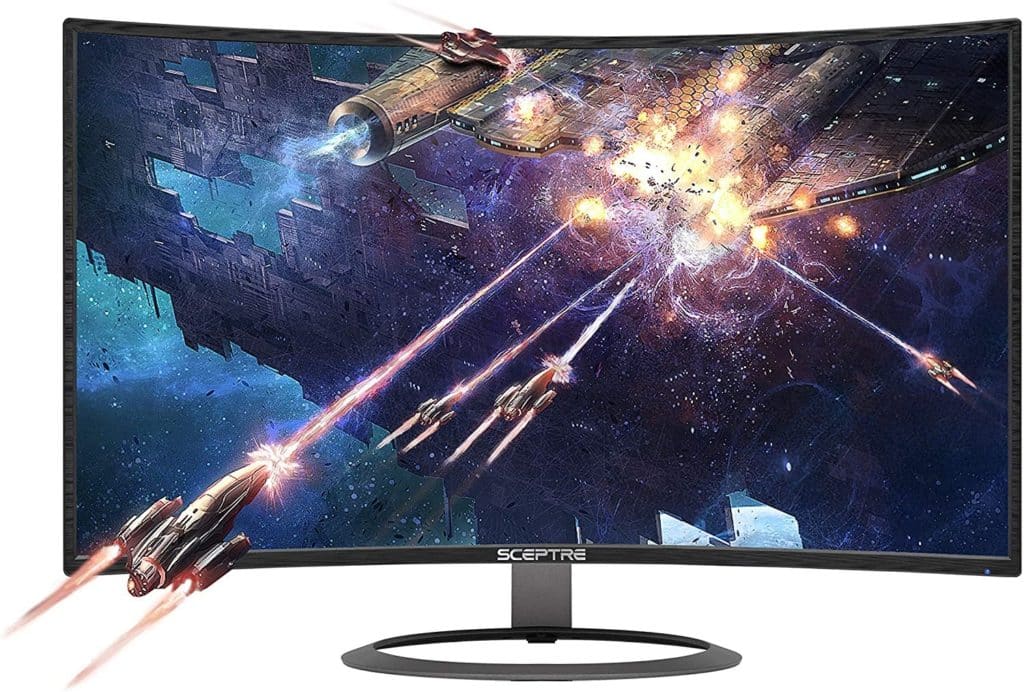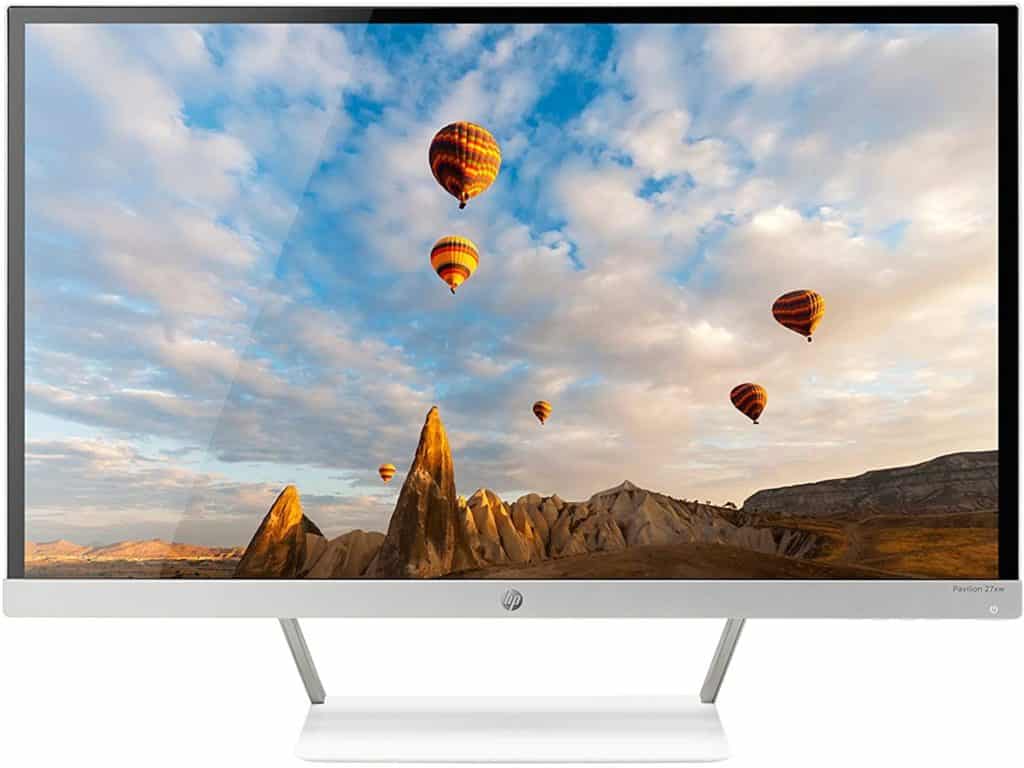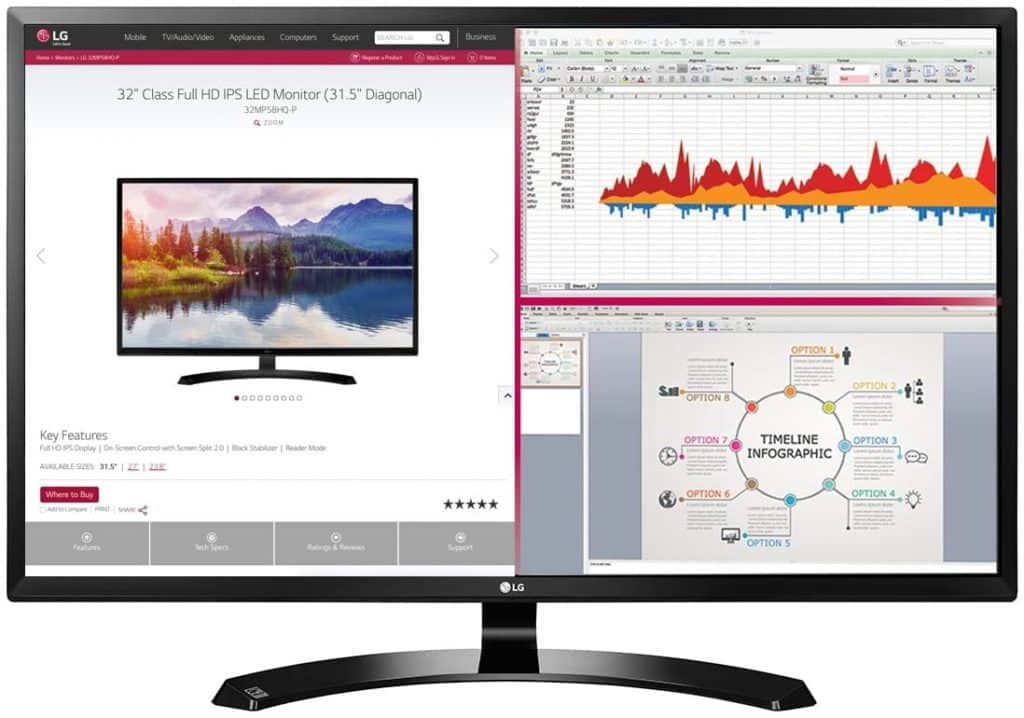A top-notch, ultra-wide monitor for programming not only lets you multi-task, but it also provides you with much-needed screen space on which to place your working windows.
So, why force a headache on yourself while working on a puny screen, when bigger monitors can make programming a breeze? Bigger working space will also benefit you with a clear headspace to sort and program to the best of your potential. Below is a review of the top five best ultra-wide monitors available for programming and multitasking.
1. HP VH240a (1KL30AA)
Starting with the best of the best, you have the HP VH240a, a trusted monitor that comes at an affordable price, as far as budget is concerned, and does not disappoint in quality, too. This monitor is number one in terms of its flexibility and quality.
The monitor comprises a 23.8-inch Full HD display. The resolution on this model is 1920 x 1080p. This model features a 60 Hz backlit LED panel. There is also an anti-glare panel stocked with over 2 million pixels. The VH240a has a response time of 5 ms, which provides digital motion with clarity, preventing blurring and glitches.
In addition, you get built-in, integrated speakers supported by a thin bezel-less frame that adds definition and class. This monitor can be hooked up with others for a multi-monitor setup through versatile connectivity pathways, such as HDMI or VGA.
The viewing pane has 90-degree rotational ability, achieving both portrait and landscape viewing modes. The monitor also comes with an adjustable stand with VESA mount for walls orbrackets. Energy-Star marking indicates an energy efficiency criterion, aiding to reduce the user’s carbon footprint. What more could you need?
Buy Here: Amazon
2. Sceptre Curved 27” Metallic Black
If you fancy a curved monitor but do not want to surpass your budget, the Sceptre C278W is an excellent option. This monitor can deliver optimum performance to your of programming experience.
The screen is a 27-inch curved LED Full HD display with attractive depth of colors and detail. The curved Sceptre complies with optimum HDMI standards. This model displays 4K Video at 60 Hz, 2160p, and 48 bit/pixel color depth, supporting up to 18 Gbps of bandwidth.
If you are worried about this model being unable to bear your programming load, then worry not. The C278W delivers a fast response time of 5 ms, ensuring smooth running operations and eradicating any blips and blurs. As for its design, this display is quite curved, and includes 1800R, along with a Lamp Life of up to 50,000 hours. The built-in integrated speakers, along with the frame, do not disappoint. Such features make this monitor perfect for coding, gaming, and video streaming.
Connectivity is available through HDMI, DisplayPort, and VGA, and is compatible with numerous operating systems.
Buy Here: Amazon
3. HP 27er (T3M88AA)
This monitor is known for its modern edge and superlative accessibility. The HP 27er is ready to amaze us with its ultra-wide display. The most intriguing aspect of this monitor is its sleek and stylish design. The screen is thin and super lightweight, which allows the user to nudge and budge the screen every now and then to fit their comfort.
This model is HP’s thinnest mounted display. The whopping 27-inch Full HHD display, at a resolution of 1920 x 1080p and 60 Hz, can make multi-tasking so much less demanding and challenging than on smaller PCs or laptop computers. The bright, in-depth resolution is not too hard on your eyes, either. The anti-glare backlit panel comes with a 7 ms response time.
The impeccable frameless display is ideal for a multi-monitor setup, as well as panoramic viewing. This model comes with an adjustable tilt and 178-degree portrait and landscape viewing angles. For additional connectivity, this monitor has 1 VGA and 2 HDMI supports for laptops or multi-monitor setups.
This model also comes Technicolor Colour Certified for enhanced high contrast color resolutions. This monitor is compatible with all operating systems. Energy Star certification of this product ensures optimum efficiency.
Buy Here: Amazon
4. LG 32MA68HY-P
At fourth place in best ultra-wide monitors, but still managing to be within budget, is the LG 32MA68HY-P.
This LG ultra-wide monitor is an affordable monitor designed for programmers. It is equipped with a huge, 32-inch full HD IPS Monitor display. This model provides a 70% more viewable surface, compared to the ordinary 24-inch monitor.
As for clarity, the HD display, along with its vibrant colors, exudes high definition to the picture quality. Even if you view the screen from a different angle, the IPS panel makes it seem all the same.
The LG 32MA68HY-P is compatible with Windows and Mac operating systems. For seamless connectivity, there are integrated display ports, including HDMI and USB 2.0, at your disposal. The easy-to-use controls on this monitor make multi-window and multi-monitor setup quite effortless. The reader mode proves highly beneficial for smooth viewing in extended working sessions.
This monitor is compatible with VESA Mount for walls and brackets, which helps you save space and de-clutter your workstation.
Buy Here: Amazon
5. Dell Professional P2717H Monitor, Black
Lastly, we have the Dell P2717H Monitor. This monitor has quite a slim border-frame design, letting the display dominate its monitor. The 27-inch display is specially designed for a professional coding experience.
This monitor increases coding productivity and provides a vibrant entertainment experience. This model has a maximum resolution of 1920 x 1080p at 60 Hz with a response time of 6ms.
The ultra-wide monitor features adjustable viewing capability for either tilt, swivel, or pivot motions. This model also offers enhanced connectivity options and comes with an integrated Display Port, HDMI, VGA port, and a USB 3.0 port, making it the best Budget Monitor from an overall perspective.
This model’s thin bezel design is optimum for dual monitor setup. The Dell P27 display monitor is specifically designed with programming professionals in mind, and its robust design is entirely professional. Programmers who are limited by budget constraints have an excellent option in Dell’s P27, which strikes a great balance between quality, compatibility, durability, and connectivity.
Buy Here: Amazon
How Choose an Ultra-Wide Monitor for Your Programming Needs
Before deciding to build a complete system for programming, there are certain things you need to keep in mind.
To be able to get more work done in less time, without any complications and system setbacks, a good quality ultrawide monitor is what you will need.
Here are some factors worth looking into when investing.
Curved or Ultra-Wide?
The orientation of an ultra-wide monitor is usually horizontal to give its user the widest display. Now, it comes to the bendability and rotatability of the screen. To be honest, it all depends on the user. A curved screen does provide a slightly better display. You will not have to make much of an effort to see things at the farthest corner, yes. But do know curved screens are pricey when it comes to budget. Curved screens may provide relief to your neck, but you can always tilt the flat monitors in an ultra-wide setup.
Features and Connectivity
What makes an ultra-wide monitor better than others is the versatility in its connectivity. Some models restrict their users to one type of cable or port, rendering it difficult for them if they wish to utilize another source or add in new devices. From HDMI ports to the Display Port, USB, USB Type C, and Bluetooth, the monitor must have it all. Otherwise, what is the use of throwing away hundreds of dollars when you cannot even pair it with other devices?
Size and Display
Now the question arises of how big you should go. The size you choose depends on your neck muscle strength and your preference. Commonly, a 24-inch to 27-inch measuring monitor suffices, as it will not be too overbearing on your desk. But, you can always go even bigger if you have plans to utilize the monitor for entertainment purposes. As for display and resolution, every size suits a different set of resolutions. The 24-inch screen size goes well with 1080p, while the 27- 30-inch screen size suits 4k. The higher the dimensions go, so does the resolution. For programming, the sharper and more pixel-dense the display, the better, so it might benefit you to try to expand your budget for a monitor that delivers in 4K.
Panel for Programming
A monitor’s panel determines its contrast ratio, image quality, and view angles. So, do make sure you check this feature very carefully!
Generally, you will have three panels to choose from:
- IPS (In-Plane Switching)
This panel is hand-crafted for programmers due to the quick and smooth performance and the high-end contrast, colors, and view angles, though monitors having IPS panels can be pricey.
- VA (Vertical Alignment)
Second best after IPS is VA. They do offer good-quality performance, color, and contrast, though they are not common in ultra-wide monitors. These panels cannot match the finesse of IPS, but are affordable, nonetheless.
- TN (Twisted Nematic)
These panels are more suited for gamers who rely more on faster performance than on view angles and color quality.
If you want a trustworthy programming monitor, it is better to invest once in a model that covers many attractive features in your respective budget, than to compromise and have to find a better model later on.
Final Thoughts
To code like a boss, an ultra-wide monitor is crucial so that you can tick off more tasks in less time, without getting frustrated by a compact, restricted view on your ordinary laptop or personal computer. All the options mentioned above have been tried and tested over the years for their quality and utility. Consider going for the model that best suits your needs. After reading this buyer’s guide, we hope you learned a thing or two. In any case, let us know your thoughts in the usual space. Until next time!
from Linux Hint https://ift.tt/314yLLU









0 Comments